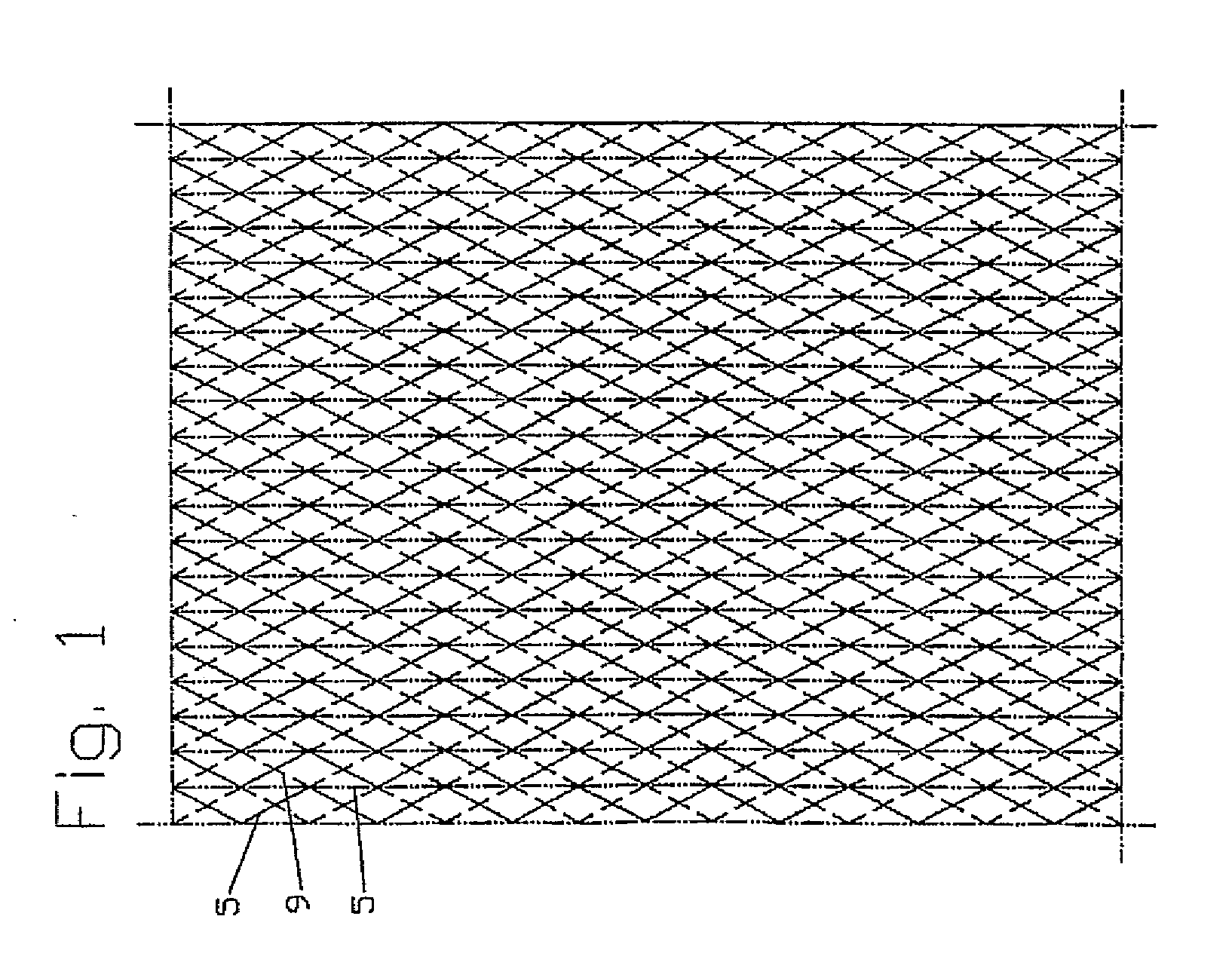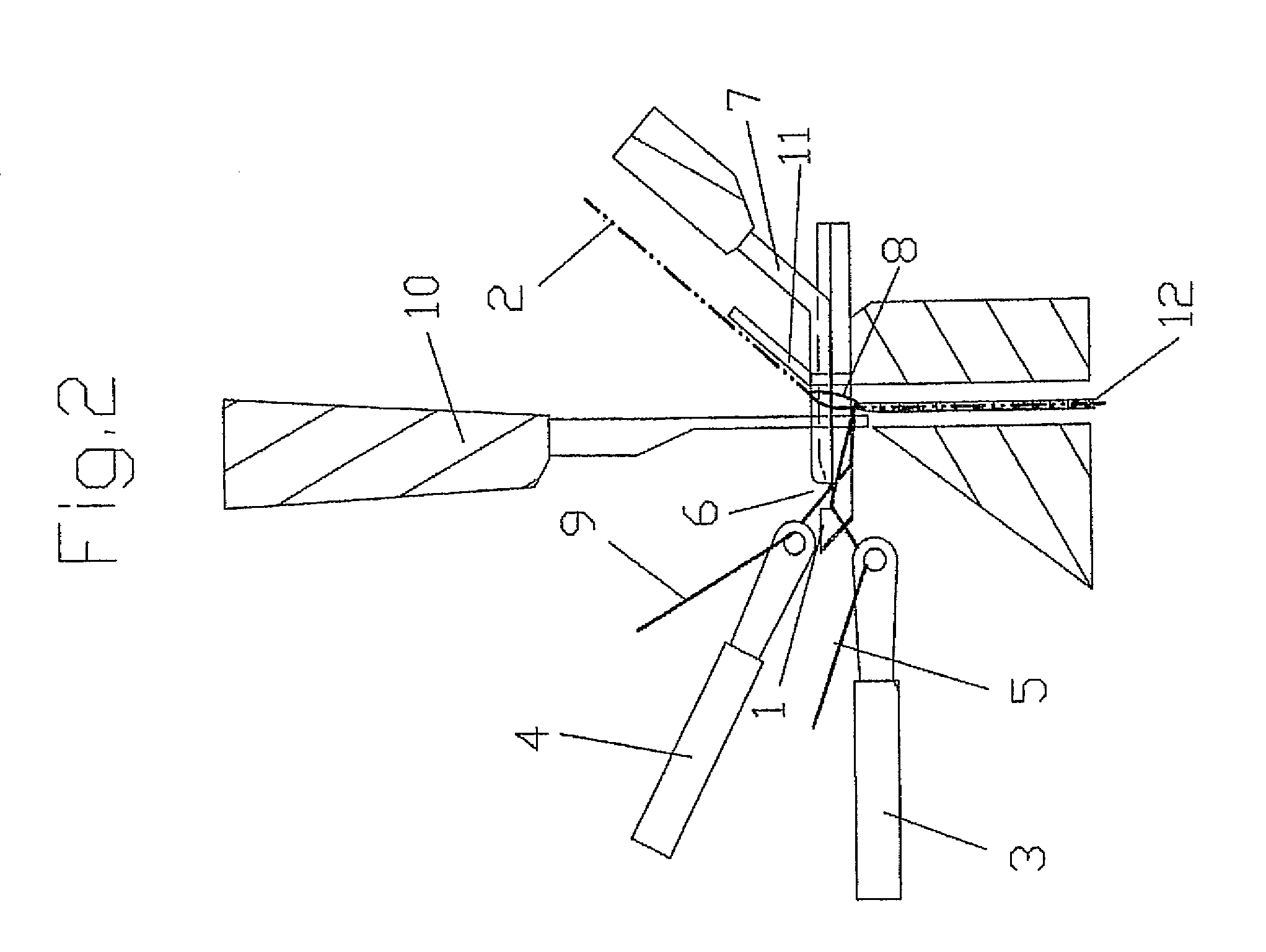Greenhouse screen
a greenhouse and screen technology, applied in greenhouse cultivation, climate change adaptation, horticulture, etc., can solve the problems of preventing optimum translucence, and achieve the effects of high stability of decomposition, improved radiation and cost, and high resistance to elongation and ruptur
- Summary
- Abstract
- Description
- Claims
- Application Information
AI Technical Summary
Benefits of technology
Problems solved by technology
Method used
Image
Examples
Embodiment Construction
[0042]The machine used for implementing the technique is in principle a known modified sewing and crocheting machine such as used, for example, for binding together fibrous material, e.g. fibre fleece.
[0043]The notations used in the drawing are as follows:[0044]1 one of a long row of mutually adjacent work needles of the compound through-stitch type with a sharp tip which move forwards and rearwards in their longitudinal direction and thereby sew through the sheeting 2.[0045]2 sheeting running into the machine.[0046]3 a first thread guide (there is one for each needle 1) which moves the thread 5 sideways, to the left and right alternately.[0047]4 a second thread guide which makes only a lateral connection between the stitch loops on one side of the sheeting.[0048]5 a thread in the first thread guide 3, which always forms stitches.[0049]6 a hook disposed on the forward end of the work needle 1.[0050]7 a slide which closes the hook 6 at the front end of the work needle 1.[0051]8 the l...
PUM
 Login to View More
Login to View More Abstract
Description
Claims
Application Information
 Login to View More
Login to View More - R&D
- Intellectual Property
- Life Sciences
- Materials
- Tech Scout
- Unparalleled Data Quality
- Higher Quality Content
- 60% Fewer Hallucinations
Browse by: Latest US Patents, China's latest patents, Technical Efficacy Thesaurus, Application Domain, Technology Topic, Popular Technical Reports.
© 2025 PatSnap. All rights reserved.Legal|Privacy policy|Modern Slavery Act Transparency Statement|Sitemap|About US| Contact US: help@patsnap.com



